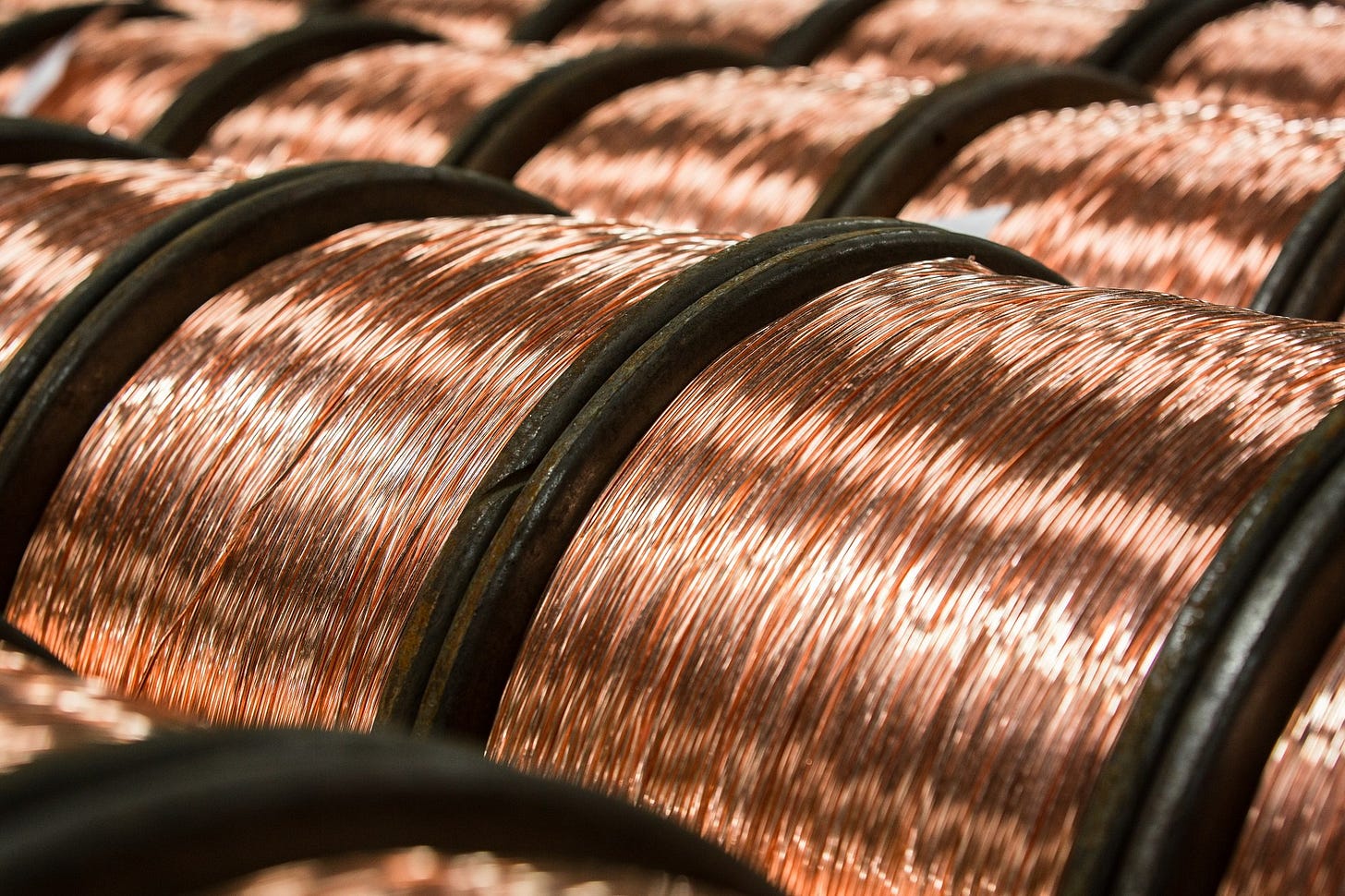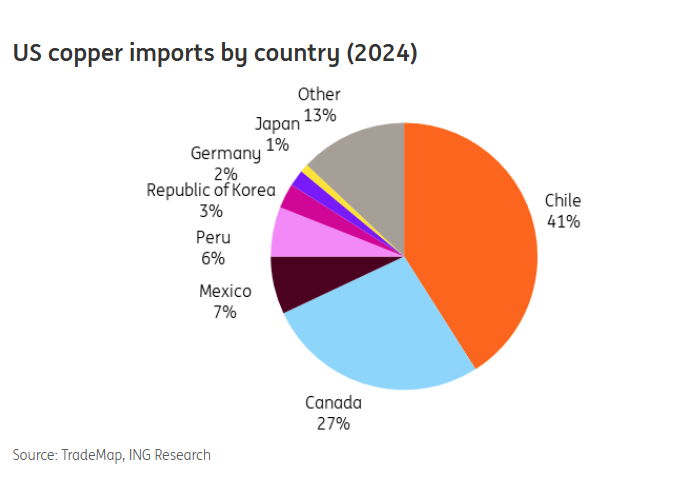Last week President Trump announced that his Administration will likely impose a stunning 50% tariff on copper. As I noted in past posts (here, here and here) , Trump’s entire tariff program is ill-advised and economically damaging, but a large tariff on copper is uniquely and stunningly stupid.
Even though the tariffs are not even in place, the effect on U.S. Copper prices was immediate—and devastating. The day after the announcement, U.S. copper prices jumped 13%. Even more critically, the price of copper in U.S. markets soared above that in other markets. Traditionally, there is no gap between copper prices in the US markets and in foreign markets such as the London Metal market. As the chart below shows, as a result of the tariff announcement, the premium between the two markets futures rose by a stunning 138%.
Whether or not U.S. manufacturers bought their copper domestically or overseas, the result was a much higher cost for this raw material than their foreign competitors. This disparity will hurt the competitiveness of U.S. manufacturing and will cause an increase in prices for consumer goods as well.
As CBS News explained:
The biggest users of copper — and therefore most exposed to the tariff increase — include a vast range of industries, covering everything from construction to semiconductors, electric vehicles and renewable energy components such as solar panels, according to industry data.
Daan de Jonge, copper demand and prices lead analyst at Benchmark Mineral Intelligence, said in a research note that "a 50% price hike will have inevitable ripple effects on the cost of new infrastructure, the cost of housing the cost of fridges, cars, air conditioning."
For consumers, that means the cost of appliances such as refrigerators and air conditioners, as well as EVs, would likely rise if this 50% tariff goes into effect, according to analysts.
"Copper is an important element in development of semiconductors and electric vehicles. And the tariff announcement caused prices to go up quite dramatically, so you can tell it's a pretty big deal," Veronique de Rugy, a professor of political economy and senior research fellow at George Mason University's Mercatus Center, told CBS MoneyWatch. "The reason President Trump picked copper is because it's such a big deal for a lot of important things."
As a starting point, it is important to note that unlike some materials—such as Rare Earths and Heavy Metals—there is really not a national security case to be made for these tariffs. This is important because national security would be the national security justification for these tariffs. The U.S. produces about half of the copper it needs, and the remaining demand is imported from close allies and other friendly countries.
So what is the stated purpose of the 50% tariff? According to Commerce Secretary Howard Lutnick, “The idea is to bring copper home, bring copper production home,” and the tariff brings copper tariffs in line with tariffs on steel and aluminum. The country’s copper production has indeed been declining in recent years, dropping 20% over the last ten years.
Does this rationale make sense? Will the tariffs result in an increase in U.S. copper production? Almost no copper market expert thinks the tariffs will work.
Why? Developing new copper production capacity will take decades and is very capital intensive. Copper producers need to search for new rich copper resources, must obtain the necessary environmental approvals, and must spend years developing the mine before the first copper gets on the market. Right now, the average mine development time in the U.S. is 29 years. Twenty-nine years. The permitting process alone takes seven to ten years.
ING did an analysis of whether the tariffs would increase U.S. copper production and concluded that it would not:
Building a new mine takes, on average, 16 to 18 years – from the discovery stage of a deposit to the start of production. In the US, the process can be even longer, averaging nearly 29 years due to extensive permitting requirements, with the permitting process taking about seven to 10 years.
There is some idled capacity in the US, but the only two active primary copper smelters are Miami in Arizona, belonging to Freeport-McMoran, and Kennecott in Utah, which belongs to Rio Tinto.
. . .
What's more, previous tariffs on steel and aluminium did not lead to increased domestic production of the two metals. In 2024, the output of the US steel industry was 1% lower than it had been in 2017 before the introduction of the first round of tariffs by Trump, while the aluminum industry produced almost 10% less.
Put yourself in the shoes of a potential investor: would you invest the massive amounts of capital it will take to produce a new mine in the US with the hope of a return in 29 years based on a legally-suspect tariffs that could easily go away in just a few years? Highly unlikely.
As the global demand for copper increases, there will indeed be an economic incentive to start new copper mine operations in the U.S., but tariffs will not drive these investments. And, during the decades it takes to develop the new capacity, US manufacturers will be stuck with massively uncompetitive copper prices compared to their foreign counterparts.
If the goal is to increase US production of copper there are other things we can do that would be far more effective. The Wall Street Journal suggests reforming the permitting process—including environmental reviews—an idea that environmental groups oppose for obvious reasons. ING suggests export restrictions on scrap and ore. Others have suggested financial incentives. All of these suggestions have the advantage that they don’t impose unnecessary costs on US manufacturers and consumers.
The Trump Administration has done lots of stupid things, but this is madness.







